Belgian Tervuren
Belgian Tervuren, or Terv as popularly nicknamed, is a medium-sized herding breed, having its roots in Belgium. This breed has a versatile temperament, hardworking, loyal, and devoted to its job, yet affectionate and friendly with a remarkable sense of humor. Its appearance is as diverse as its demeanor, agile, sturdy, well-muscled, but full of elegance. The dark brown, almond-shaped eyes and triangular, erect ears immensely account for its alert, questioning expression that mostly remains written on its face. These lively dogs bustling with energy have a lively gait, always on the urge to be in motion without tiring out.
Belgian Tervuren Pictures
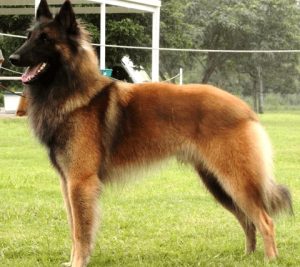

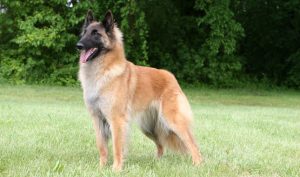
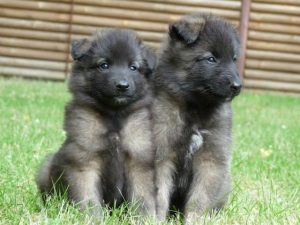
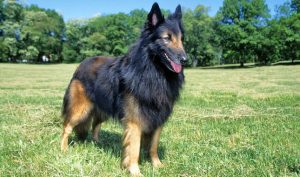
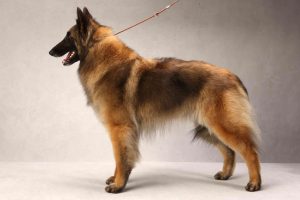
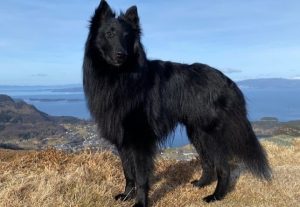



Quick Information
| Other Names | Terv |
| Coat | Double coat – Dense and protective outer coat; Harsh Outer coat |
| Color | Fawn and black; mahogany and black; black; brindle; gray and black; silver and black; cream and black; cream and black; fawn and liver; mahogany and liver |
| Breed Type | Purebred |
| Group | Herding Dog |
| Average Life Span | 12 – 14 years |
| Size | Medium |
| Height | Male: 24 – 26 inches; Female: 22 – 24 inches |
| Weight | Male: 55 – 66 pound; Female: 44 – 55 pound |
| Litter Size | 6 – 10 puppies |
| Personality | Intelligent, alert, loyal, protective, energetic, affectionate |
| Good with Children | Yes; only if raised or socialized to interact with them |
| Barking Tendency | Moderate; barks out of excitement upon meeting new people or when bored |
| Climate Compatibility | High |
| Do they Shed | Excessive (sheds all-year-round) |
| Are They Hypoallergenic | No |
| Competitive Registration Qualification/ Information | AKC |
| Country | Belgium |
What Does a Belgian Tervuren Look Like
Head: Well-defined and chiseled
Eyes: Medium-sized, dark brown, and almond-shaped
Ears: Stiff, well-cupped, and erect, with a triangular shape
Nose: Black with well-defined nostrils
Neck: Round, muscular, and slightly arched tapering from its head to body
Skull and Muzzle: Flat, round skull (at the top), moderately pointed muzzle, and strong, powerful jaws
Tail: Strong near the base; low set when the dog is at rest, and raised and slightly curved when in motion
Belgian Tervuren Video
History and Origin
The Belgian Tervuren dog is one of the four Belgian herding dogs developed during the late 1800s, so similar in appearance that all were regarded as one breed at one point. The significant difference, however, lies in their hair type and color. The Belgian Shepherd or sheepdog is the primary breed, bred into four others, differing in color and coat texture. The Tervuren is long-haired and fawn; the Malinois appears short-haired, the fawn-colored Laekenois is wire-haired, while the Groenendael is long-haired and black.
In Belgium, the breed has been referred to as Chien de Berger Belge. Its English name stems from the Tervuren village where M.F. Corbeel, the breeder responsible for its development, resided. In fact, Corbeeel bred two fawn-colored dogs, namely Tom and Poes, laying the foundation of this breed.
Before industrialization, they excelled as adept herding and guarding dogs, mainly employed in farms to look after the property and herd livestock. Their protective, alert nature and immense stamina made them efficient in their job.
With the introduction of mechanized farming methods, their importance did not reduce to the slightest extent. In the present times, they have been used as military and K-9 dogs. Their loving and caring disposition has made them excellent service and therapy dogs for the ailing and disabled.
They did not attain too much popularity in the United States of America before the 1950s. It was in 1953 that certain Tervs were imported to America for breeding programs. Till 1958, it was a part of the Belgian sheepdog, after which it gained a separate breed status by the AKC in 1959. Of the 155 recognized breeds of the AKC, the Belgian Tervuren ranks 107th.
Temperament
One of the main traits of the Belgian Tervuren is its vigilant and observant nature, making it a fierce protector of its family and property. However, these loyal dogs would not show aggression just like that and will only get defensive if needed.
Simultaneously there is a loving and affectionate side of their character, with these dogs bonding strongly with their family. They would need their near one’s attention all the time, detesting if left alone for prolonged periods. Another trait of the Terv is its brilliant sense of humor, with which it charms its owner and everyone else at home.
Their intelligence, teamed with their over-enthusiastic nature, doesn’t make them a good option for the novice or those desiring a calm and quiet house pet.
They do get along well with children, especially if brought up with them. Yet, the Terv enjoy the company of adults more than the little ones. Moreover, because of their herding lineage, they often have the instinct to chase or nip at the heels even when at play, ending up hurting the little ones unintentionally. When it comes to dogs and cats, it is all the more the same, and they would mingle well if all belonged to the same household. However, they could turn into fierce chasers upon spotting an unfamiliar cat or smaller animals in the yard.
Care
Exercise
The AKC standard describes it as a breed in motion constantly, which very much justifies the intense amount of exercise it needs to keep healthy and happy. They would enjoy a high degree of physical activity throughout the day. Even if you cannot entertain them throughout the day, at least make sure to keep one hour aside daily for their exercise. You may divide it into two or even three play sessions and maybe one 30-minute or two 15-minutes walk. If you have a yard, fence them well. While taking them out, make your dogs wear a leash, lest they could run around in circles or go haywire when they see something in motion like small pets or even cyclists passing by. They are even apt for participating in several competitions like agility and obedience.
Grooming
They shed throughout the year and need brushing one or two times a week using a slicker and a pin brush. During the shedding season that mainly occurs once a year, this might go up to four times a week. Combing the undercoat using a rake could help remove the dead hair more efficiently. Other grooming needs include cleaning its ears and eyes weekly, brushing its teeth thrice a week, and even trimming the nails whenever they get long. Bathe it only when it gets dirty, though cleaning it in warm water during the shedding season may easily remove the dead hairs.
Health Problems
They are a healthy breed but could suffer from certain conditions like hip dysplasia, elbow dysplasia, progressive retinal atrophy, epilepsy, and progressive retinal atrophy. To attain a CHIC (Canine Health Information Center) Certification, this breed should get evaluated for elbow, hip, and thyroid problems by the OFA (Orthopedic Foundation for Animals). They even need clearance for any eye problems from Canine Eye Registration Foundation.
Training
Their intelligence and observant nature are a boon to training if channelized correctly. They would need an experience taskmaster who could handle them tactfully. They need a pleasant training experience since these sensitive dogs cannot withstand harsh behavior at all.
Socialization: The Terv puppies need to be socialized at the earliest so that they grow up to display a desirable behavior. Expose them to diverse people, situations, and even places. They would get used to varied experiences and eventually learn to distinguish the good from the bad, not barking aloud in agony at every stranger they come across.
Obedience: These motionless dogs do not stop unless commanded; hence training them to follow commands is something you would need to start as soon as possible. Teach them to follow a ‘stop’ or a ‘stay’, so that the next time they try asserting their independence, your firm voice could compel them from deterring their actions.
Leash: If you do not teach them to wear a leash, they would eventually turn into fierce chasers when they step out, bringing danger for themselves and even you.
Feeding
For a balanced diet, high-quality dog food, store-bought or homemade, is needed. When preparing their food at home, include meat in their food as these active dogs need a high protein diet. Additionally, you can even give them vegetables, eggs, and cheese about three times a week. They are likely to get obese, so limit the amount of treat you give them after a training session or as a reward for any good deed they do.
Interesting Facts
- Belgian painter Alexander Clarys included the Terv in a particular painting of his during the 20th century.
- They even featured in the 1984 British horror movie, The Company of Wolves, playing the role of the wolves.
- Because of the black mask, fawn body, and the similar jobs they do, the Belgian Tervuren could often be confused with a German Shepherd, yet both have noted visible differences. The German Shepherd appears larger and heavier, with a rectangular body and sloping back. The Terv is smaller with a square body and flat back.





